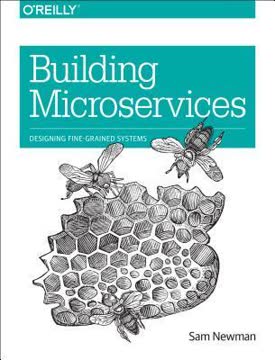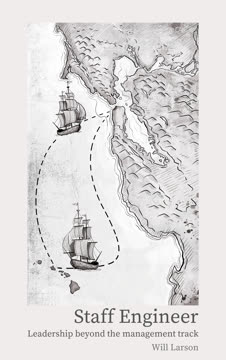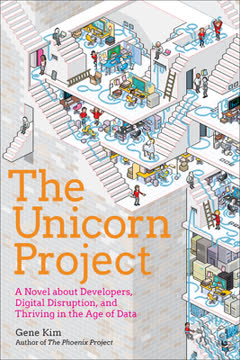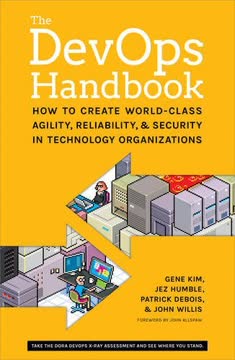Key Takeaways
1. IT Operations is crucial for business success and requires strategic management
"IT is not just a department. IT is a competency that we need to gain as an entire company."
Strategic importance of IT: In today's digital age, IT is no longer just a support function but a critical driver of business success. It impacts every aspect of the organization, from customer experience to operational efficiency.
Alignment with business goals: IT Operations must be tightly aligned with overall business objectives. This means:
- Understanding key performance indicators (KPIs) and how IT contributes to them
- Regular communication with business leaders to understand their needs and challenges
- Proactively identifying opportunities for IT to drive business value
Skilled leadership: Managing IT Operations requires a unique blend of technical expertise and business acumen. Leaders in this role must be able to:
- Translate technical concepts for non-technical stakeholders
- Make strategic decisions about resource allocation and technology investments
- Foster a culture of innovation and continuous improvement within the IT department
2. Embrace the Three Ways: Flow, Feedback, and Continual Learning
"The First Way helps us understand how to create fast flow of work as it moves from Development into IT Operations, because that's what's between the business and the customer."
The First Way - Flow: This principle focuses on optimizing the flow of work from development to operations and ultimately to the customer. Key practices include:
- Reducing batch sizes and work in progress (WIP)
- Identifying and eliminating bottlenecks
- Standardizing processes and environments
The Second Way - Feedback: This emphasizes the importance of creating fast, frequent feedback loops throughout the value stream. Implement:
- Automated testing and monitoring
- Regular retrospectives and post-mortems
- Continuous integration and deployment practices
The Third Way - Continual Learning: This way promotes a culture of experimentation, learning from failures, and continuous improvement. Encourage:
- Blameless post-mortems after incidents
- Dedicating time for innovation and experimentation
- Sharing knowledge across teams and departments
3. Identify and manage constraints to improve overall system performance
"Any improvement made after the bottleneck is useless, because it will always remain starved, waiting for work from the bottleneck."
Theory of Constraints: This management philosophy, developed by Eliyahu M. Goldratt, focuses on identifying and managing the most significant limiting factor (constraint) in a system. In IT Operations, constraints might be:
- Specific individuals with unique knowledge (e.g., "Brent")
- Outdated or insufficient hardware
- Inefficient processes or workflows
Five Focusing Steps:
- Identify the constraint
- Exploit the constraint (maximize its efficiency)
- Subordinate everything else to the constraint
- Elevate the constraint (increase its capacity)
- Repeat the process (find the next constraint)
Practical application: Once you've identified your constraint, focus your improvement efforts there. For example, if a key team member is the bottleneck, consider:
- Documenting their knowledge to share with others
- Automating some of their routine tasks
- Providing them with additional resources or support
4. Implement effective change management to reduce errors and downtime
"We need to curb the handoffs of defects to downstream work centers, managing the flow of work, setting the tempo by our constraints."
Structured change process: Implement a formal change management process that includes:
- Clear documentation of proposed changes
- Risk assessment and impact analysis
- Approval workflows based on change type and risk level
- Scheduled change windows to minimize disruption
Visibility and communication: Ensure all stakeholders are aware of upcoming changes:
- Maintain a centralized change calendar
- Regular change advisory board (CAB) meetings
- Clear communication channels for announcing and discussing changes
Continuous improvement: Regularly review and refine your change management process:
- Conduct post-implementation reviews
- Track change success rates and reasons for failures
- Encourage feedback from all team members involved in the change process
5. Break down silos between Development and Operations for better collaboration
"Dev and Ops working together, along with QA and the business, are a super-tribe that can achieve amazing things."
DevOps culture: Foster a culture of collaboration and shared responsibility between Development and Operations teams:
- Encourage cross-functional teams and knowledge sharing
- Implement shared goals and metrics
- Promote empathy and understanding of each other's challenges
Shared tools and processes: Adopt common tools and practices across Development and Operations:
- Version control systems for both code and infrastructure
- Continuous integration and deployment pipelines
- Shared monitoring and alerting systems
Shift left: Involve Operations earlier in the development process:
- Include Ops in design and planning discussions
- Implement infrastructure-as-code practices
- Conduct joint testing and quality assurance activities
6. Automate deployment processes to increase speed and reliability
"You need to get everything in version control. Everything. Not just the code, but everything required to build the environment."
Deployment pipeline: Create an automated pipeline for building, testing, and deploying applications:
- Continuous integration: Automatically build and test code changes
- Automated testing: Unit tests, integration tests, and acceptance tests
- Infrastructure-as-code: Version-controlled, reproducible environments
- Continuous deployment: Automate the release process to production
Benefits of automation:
- Reduced human error
- Faster, more frequent releases
- Consistent environments across development, testing, and production
- Easier rollbacks in case of issues
Gradual implementation: Start small and gradually expand your automation efforts:
- Begin with the most repetitive, error-prone tasks
- Continuously refine and improve your automated processes
- Invest in training and tools to support automation efforts
7. Prioritize and manage work effectively to meet business objectives
"We can't make new commitments to other people when we don't even know what our commitments are now!"
Work visibility: Create a clear, centralized view of all ongoing and planned work:
- Use visual management tools like kanban boards
- Regularly update and review project status
- Ensure all work, including unplanned tasks, is captured
Prioritization framework: Develop a system for evaluating and prioritizing work:
- Align with business goals and KPIs
- Consider both urgency and importance
- Factor in resource constraints and dependencies
Work in Progress (WIP) limits: Set and enforce limits on the amount of work in progress:
- Reduce context switching and multitasking
- Improve flow and completion rates
- Highlight bottlenecks and capacity issues
Regular review and adjustment: Continuously reassess priorities and resource allocation:
- Hold weekly or bi-weekly planning meetings
- Be prepared to adjust plans based on changing business needs
- Communicate changes clearly to all stakeholders
8. Continuously improve and adapt IT processes to stay competitive
"Improving daily work is even more important than doing daily work."
Culture of improvement: Foster an environment where continuous improvement is expected and encouraged:
- Allocate time for improvement initiatives (e.g., 20% of work time)
- Celebrate and recognize successful improvements
- Encourage experimentation and learning from failures
Measurement and feedback: Implement systems to track performance and gather feedback:
- Define clear, measurable KPIs for IT processes
- Conduct regular surveys of internal customers and team members
- Use data to drive decision-making and improvement efforts
Agile methodologies: Adopt agile practices to increase flexibility and responsiveness:
- Short development cycles (sprints)
- Regular retrospectives to identify areas for improvement
- Incremental delivery of value to the business
Learning organization: Promote knowledge sharing and skill development:
- Cross-training and job rotation programs
- Internal tech talks and knowledge sharing sessions
- Support for attending conferences and external training
9. Build trust and open communication within teams and across departments
"A great team doesn't mean that they had the smartest people. What made those teams great is that everyone trusted one another."
Transparency: Foster an environment of openness and honesty:
- Share both successes and failures openly
- Provide regular updates on projects and initiatives
- Be clear about challenges and limitations
Active listening: Encourage genuine dialogue and understanding:
- Practice empathy and seek to understand others' perspectives
- Ask clarifying questions and provide thoughtful responses
- Create safe spaces for open discussions and feedback
Team building: Invest in activities that strengthen relationships:
- Regular team outings or social events
- Cross-functional projects and collaborations
- Team-building exercises and workshops
Accountability: Create a culture where team members feel responsible for their commitments:
- Set clear expectations and goals
- Follow through on promises and deadlines
- Address issues promptly and constructively
10. Balance technical debt and innovation to maintain long-term sustainability
"Technical debt will ensure that the only work that gets done is unplanned work!"
Understanding technical debt: Recognize the long-term costs of shortcuts and quick fixes:
- Document known technical debt
- Educate stakeholders on the impact of technical debt
- Include technical debt reduction in project planning
Prioritizing debt reduction: Allocate resources to address critical technical debt:
- Focus on areas that have the biggest impact on stability and performance
- Include debt reduction tasks in regular sprint planning
- Set goals for gradually improving system health
Innovation investment: Balance debt reduction with forward-looking initiatives:
- Allocate a percentage of resources to innovation and experimentation
- Encourage ideas from all team members
- Create a process for evaluating and implementing innovative ideas
Sustainable development practices: Implement processes that prevent the accumulation of new technical debt:
- Code reviews and pair programming
- Automated testing and continuous integration
- Regular refactoring and system health checks
Last updated:
FAQ
What's The Phoenix Project about?
- IT and Business Challenges: The Phoenix Project is a novel that delves into the struggles of IT departments within modern businesses, focusing on DevOps principles. It follows Bill Palmer, who becomes VP of IT Operations at Parts Unlimited, a company facing significant challenges.
- Crisis and Transformation: The story revolves around Bill managing crises like a failed payroll system and a disastrous product launch, while trying to implement effective IT practices. It highlights the need for collaboration between IT and other business units.
- DevOps and Efficiency: The book introduces key DevOps principles, emphasizing improved communication, efficiency, and accountability within IT operations to support business goals.
Why should I read The Phoenix Project?
- Practical Insights: The book offers practical insights into managing IT operations and implementing DevOps methodologies, making it valuable for IT professionals and business leaders.
- Cultural Shift: It highlights the cultural changes necessary for successful IT transformation, encouraging readers to rethink their approach to technology and collaboration.
- Problem-Solving Framework: The narrative presents a framework for identifying and solving problems within IT departments, helping organizations improve operational efficiency.
What are the key takeaways of The Phoenix Project?
- Collaboration is Key: Successful IT operations require collaboration across departments, including Development, Operations, and Security, to address challenges and achieve business objectives.
- Managing Work in Progress: The book introduces managing work in progress (WIP) to prevent bottlenecks and ensure smooth workflows, stressing the need to prioritize tasks effectively.
- Continuous Improvement: It advocates for a culture of continuous improvement, where teams regularly assess their processes to identify areas for enhancement.
What specific methods or advice does The Phoenix Project offer?
- Drum-Buffer-Rope Method: This method from the Theory of Constraints helps manage the flow of work to the constraint, ensuring critical resources are utilized effectively.
- Kanban for Change Management: The book introduces Kanban boards to visualize work and manage change requests, allowing teams to prioritize and track progress.
- Blameless Postmortems: Conducting blameless postmortems after incidents fosters a culture of learning and improvement without assigning blame.
What is the "Three Ways" framework in The Phoenix Project?
- First Way - Flow: Focuses on optimizing the flow of work through the system, ensuring tasks move smoothly from Development to Operations.
- Second Way - Feedback: Highlights the importance of creating feedback loops at every stage, allowing teams to learn from failures and successes.
- Third Way - Continuous Learning: Encourages a culture of experimentation and learning, fostering an environment where failure is seen as a learning opportunity.
How does The Phoenix Project illustrate the challenges of IT operations?
- Frequent Crises: The book portrays a chaotic IT environment with frequent crises due to poor communication and lack of planning, highlighting the need for proactive management.
- Resource Constraints: It illustrates the struggle of IT departments to manage limited resources while meeting business demands, often leading to burnout and inefficiency.
- Cultural Resistance: The novel shows how cultural resistance can hinder progress, emphasizing the importance of fostering a culture that embraces change and collaboration.
How does The Phoenix Project address the concept of unplanned work?
- Definition and Impact: Unplanned work is defined as tasks that arise unexpectedly, disrupting planned initiatives and leading to chaos and inefficiency.
- Productivity Challenges: It shows how unplanned work can overwhelm resources, preventing teams from completing scheduled tasks and affecting morale.
- Management Strategies: The book offers strategies for managing unplanned work, such as prioritizing tasks, improving communication, and implementing effective change management processes.
What role does Brent play in The Phoenix Project?
- Key Resource: Brent is a highly skilled engineer who becomes a bottleneck due to his extensive knowledge, highlighting dependency challenges.
- Constraint Management: He exemplifies a constraint in IT operations, illustrating the need to manage and optimize his workload for overall efficiency.
- Knowledge Transfer: Brent's character underscores the importance of documenting processes and sharing knowledge to prevent over-reliance on any one individual.
How does The Phoenix Project suggest improving IT operations?
- Adopting DevOps Practices: The book advocates for DevOps practices to improve collaboration between Development and IT Operations, including automating processes and creating feedback loops.
- Continuous Improvement Focus: It emphasizes the need for continuous improvement, encouraging teams to regularly assess their processes and make necessary adjustments.
- Aligning IT with Business Goals: The narrative stresses aligning IT initiatives with business objectives, requiring clear communication and collaboration across departments.
What are the best quotes from The Phoenix Project and what do they mean?
- “The way things are going, I’ll be out of a job in six months.”: Reflects the high stakes and pressure faced by IT leaders, underscoring the urgency for effective management.
- “Every responsible company takes care of its employees.”: Emphasizes the ethical responsibility of organizations to support employees, linking well-being to business success.
- “You can’t improve what you don’t measure.”: Stresses the importance of metrics and data in driving improvement initiatives, reminding organizations to track performance.
How does The Phoenix Project relate to real-world IT challenges?
- Common IT Issues: The novel addresses challenges like resource constraints, communication breakdowns, and pressure to deliver on multiple projects, resonating with IT professionals.
- Lessons for Application: Readers can apply the principles of DevOps and effective management from Bill’s experiences to their own organizations.
- Cultural Transformation: It highlights the importance of cultural transformation to support successful IT initiatives, encouraging a culture of collaboration and continuous improvement.
What challenges does Bill Palmer face in The Phoenix Project?
- Crisis Management: Bill is tasked with saving the failing Phoenix project, critical to the company’s survival, navigating IT failures and organizational politics.
- Resistance to Change: He encounters resistance from stakeholders reluctant to change established processes, highlighting difficulties in implementing new practices.
- Balancing Priorities: Bill struggles to balance immediate business needs with long-term goals, making tough decisions about resource allocation and project prioritization.
Review Summary
The Phoenix Project receives mixed reviews. Many IT professionals praise its realistic portrayal of IT challenges and DevOps principles, finding it educational and relatable. Some appreciate the novel format for teaching IT concepts, while others criticize the writing style and character development. Positive reviews highlight its insights into IT management and DevOps practices. Negative reviews point out unrealistic timelines, oversimplification, and propagandistic elements. Overall, the book seems most valuable to those in IT seeking to understand DevOps and lean principles, though opinions on its effectiveness vary widely.
The Phoenix Project Series
Similar Books










Download PDF
Download EPUB
.epub digital book format is ideal for reading ebooks on phones, tablets, and e-readers.








